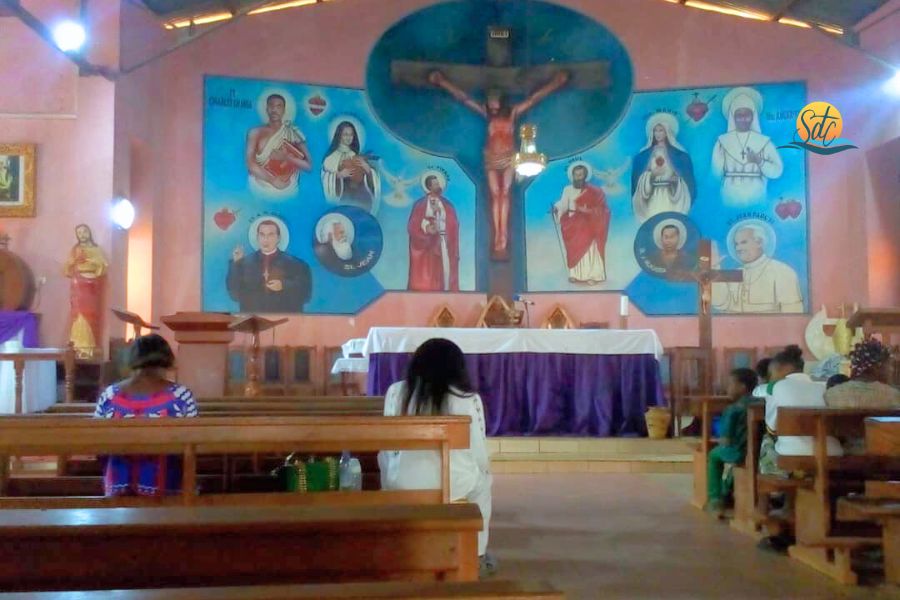On Sunday, February 2, a new botanical trail was inaugurated inside the Eco-Charity Garden, Casa Generalizia, Rome.
The Way of Breathing Trees is an immersive walk among impressive tree specimens.
Through this itinerary, visitors can discover extraordinary trees that populate the garden of the Sisters of Charity, silent witnesses of distant eras and symbols of connection between cultures and landscapes.

As volunteer Maria Grazia tells us, many of the plant species in the park were brought to Rome by the Sisters of Charity from their missionary journeys, becoming symbols of the congregation’s vocation to universality.
“On Sunday, February 2, we launched the new botanical trail within the Eco-Charity Garden. It is the path called ‘The Way of Breathing Trees’.
Our many visitors accepted with interest the invitation to participate in this path, being led both by the breath of the living Trees in the park and by the stories told about them by our friend biologist Sabina De Innocentiis.
But who are these impressive arboreal ambassadors?
We chose for this time the evergreen ones given the winter season: the Silver Fir, Cedar of Lebanon, Holm Oak, Sequoia, Olive and Laurel.
In the first part of the walk we were enraptured by the variety of conifers:
- the White Spruce , a true witness to the forests of 18,000 years ago, also believed to be very long-lived we are told by its name genus “abies” from the Greek “abios” meaning long-lived and white because of its leaves that have two whitish parallel lines on the underside;
- the Spruce , our typical Christmas tree;
- the Cedar of Lebanon, which greeted us as a wise king of ancient times, much cited in the Bible as an example of strength, endurance and wisdom. It is said that with its wood both the temple in Jerusalem and the royal palace were built by order of King Solomon.

In the second part, we found and saw in a new light our usual typical Mediterranean trees:
- the Holm Oak, adapted to the Mediterranean climate and thus able to withstand prolonged drought and brackish winds, belongs to the oak genus, a symbol of strength and courage; we entered the grove of Holm oaks to the highest point of the Aventine.
- the Olive Tree, an undisputed symbol of all Mediterranean culture, actually comes from Asia Minor and was domesticated in Palestine by its wild progenitor in very ancient times, about 8,000 years ago; from there it was gradually spread first to Egypt and then, through first the Phoenicians and later, above all, the Greeks and Romans, throughout the Mediterranean. We walked along the Avenue of Olives leading up to the viewpoint.
- the Laurel, an evergreen plant whose size varies from that of a small shrub to a tree that can reach up to 10 meters. We saw one particular specimen that has developed 5 trunks in a circle, with characteristic smooth light green bark.
Last we were surprised to find here the evergreen giant of North America:
- the Sequoia, the world’s tallest conifer that can reach heights of more than 100 meters in regions where it grows wild. It is an iconic and imposing tree, native to the West Coast of the United States, particularly California. We paused under the tree to observe the tiny pine cones in contrast to the gigantic height attained by the tree.

Many of the plant species in the park were brought here by the sisters themselves, returning from their missionary journeys, such as this sequoia, becoming a symbol of their vocation to universality (the sisters are present on all continents with 33 missions); they now remind us how everything on this planet is inextricably connected (LS 42) and invite us to contemplate the enormous mystery of life.”
Maria Grazia, Eco-Charity Garden volunteer, Rome






